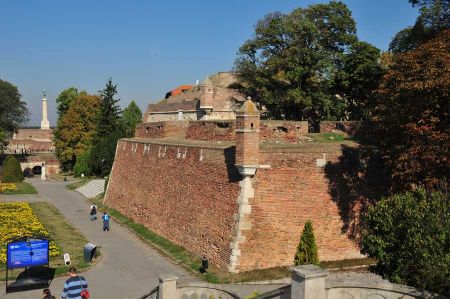Ottomans were leaving Belgrade - a changing city
- Written by Portal Editor
Ottomans - Until 1850, the historic old town of Belgrade, today a large part of the Stari Grad district, was almost congruent with the entire city area, i.e. actually a small town.
This so-called old town district was delimited by a palisade jump with three gates (Vašarska kapija, Stambol kapija, Vidin kapija) between the Sava and Danube.
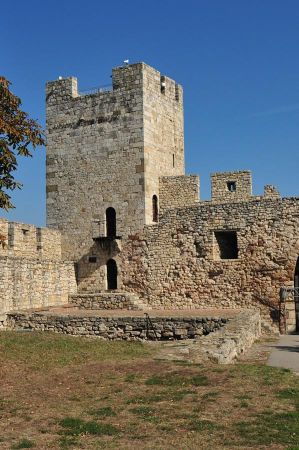 The most important building in this district and the most famous landmark of Belgrade is the Belgrade Fortress. The strategic location has favored urban fortification since ancient times. After the first Celto-Thracian settlement in the 1st century AD, the Romans fortified the plateau with a castrum, the Byzantines in the 6th century with a fort, and the Serbian despot Stefan Lazarević with an extensive medieval castle with a double wall and moats and a lock.
The most important building in this district and the most famous landmark of Belgrade is the Belgrade Fortress. The strategic location has favored urban fortification since ancient times. After the first Celto-Thracian settlement in the 1st century AD, the Romans fortified the plateau with a castrum, the Byzantines in the 6th century with a fort, and the Serbian despot Stefan Lazarević with an extensive medieval castle with a double wall and moats and a lock.
In the wake of the Turkish wars, Prince Eugen conquered the castle into a fortress with artillery bastions. After the fortress was destroyed and reconstructed several times, also by the Ottomans, it essentially consists of a 15th century complex with extensions from the 17th and 18th centuries.
The fortress is divided into the upper and lower town. The upper town is enthroned on a limestone spur at a height of 125 m, 50 m below the lower town on the alluvial plain in the Save Delta. The Great War Island lies in the delta of the Sava into the Danube.
The Stara Caršija, Dorčol and the Stari Vašar (market square) formed the small districts of the civil town within the hill. Between 1840 and 1860 the population doubled rapidly to around 20,000.
Ottomans - From the military city to the civil city of Belgrade
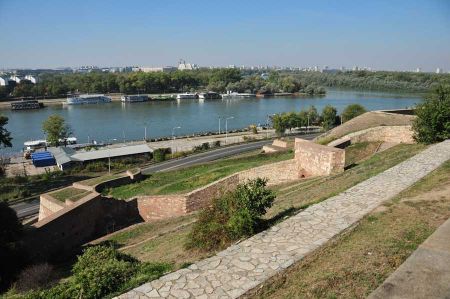 The fortress, administered by the Ottomans with an Ottoman military governor, remained politically and territorially an independent entity until 1867.
The fortress, administered by the Ottomans with an Ottoman military governor, remained politically and territorially an independent entity until 1867.
After the Ottomans briefly lost control of the majority of the rural areas in the Pashalik of Belgrade in 1804 and 1813, from 1830 they legalized the sovereignty of the prince over the Christian residents in the Pashalik of Belgrade in an agreement with Miloš Obrenović.
The Muslim residents, however, were placed under the authority of the city's magistrate, Ottoman authorities, Christian and Jewish residents, who in 1836 made up about half of the population.
Until the end of the Ottoman military administration, the Muslims were also prohibited from selling their own property in the city.
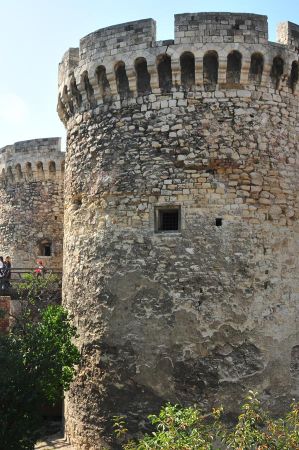 It was not until 1841 that it was permitted for the first time to erect a Christian church inside the hill (Saborna Crkva, 1841).
It was not until 1841 that it was permitted for the first time to erect a Christian church inside the hill (Saborna Crkva, 1841).
After 1833, the Ottomans Empire increasingly lost interest in public administration, and the magistrate also took over the public water supply to the wells (çesme).
The uprising of Belgrade, which broke out at a well (çükür çemse / Čukur čemsa) in 1862 and developed out of intra-ethnic conflicts between Christians and Muslims, decided to hand over the Ottoman military administration to the Serbian authorities until a transitional period in 1867.
The Ottoman flag remained on the fortress until 1878 as a symbol of imperial belonging to the Ottomans Empire.
The Muslim inhabitants also leave the city
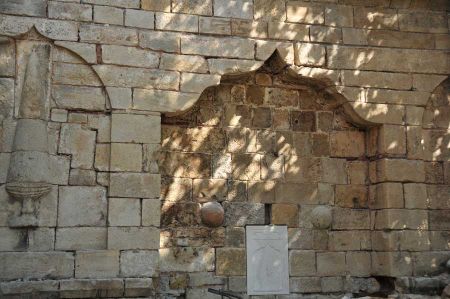 After the military withdrawal, which accompanied the extensive migration of Belgrade's Muslim inhabitants, a general regulation of the urban area within the ski jump was worked out, which became necessary due to the empty Muslim neighborhoods.
After the military withdrawal, which accompanied the extensive migration of Belgrade's Muslim inhabitants, a general regulation of the urban area within the ski jump was worked out, which became necessary due to the empty Muslim neighborhoods.
In the "deosmanization" of the oriental character and the planned completion of the national capitals in urban planning, in which the majority of Ottomans buildings were demolished (all but one of 16 mosques fell victim to regulation), the generous structure also became modern administrative district started.
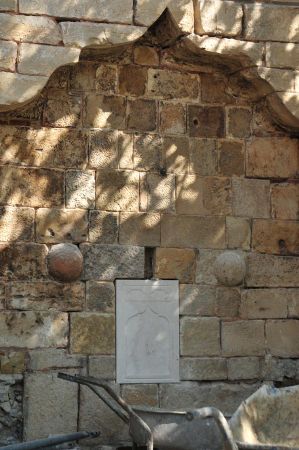 Until the outbreak of the First World War, the city grew together with the older settlement of Palilula in the southern extension of the Sava Mala (now Savski Venac) and Vračar. After 1918, the former Habsburg-managed left bank of the Sava and Danube joined Belgrade's urban area, but it was not until 1948 that city regulation was implemented with the construction of Novi Beograd.
Until the outbreak of the First World War, the city grew together with the older settlement of Palilula in the southern extension of the Sava Mala (now Savski Venac) and Vračar. After 1918, the former Habsburg-managed left bank of the Sava and Danube joined Belgrade's urban area, but it was not until 1948 that city regulation was implemented with the construction of Novi Beograd.
Every year on Republic Day on February 15, the celebrations are launched from the fortress by artillery shots from the Guard.
Please read as well:
Belgrade - Ottoman Conquest and Turk Wars
Serbia in Transition - some approaches for understanding
-
 Belgrade Castle Views - long History
Belgrade Castle Views - long History
Belgrade Castle Views - long History
Belgrade Castle Views - long History
-
 Belgrade Castle Views - long History
Belgrade Castle Views - long History
Belgrade Castle Views - long History
Belgrade Castle Views - long History
-
 Belgrade Castle Views - long History
Belgrade Castle Views - long History
Belgrade Castle Views - long History
Belgrade Castle Views - long History
-
 Belgrade Castle Views - long History
Belgrade Castle Views - long History
Belgrade Castle Views - long History
Belgrade Castle Views - long History
-
 Belgrade Castle Views - long History
Belgrade Castle Views - long History
Belgrade Castle Views - long History
Belgrade Castle Views - long History
-
 Belgrade Castle Views - long History
Belgrade Castle Views - long History
Belgrade Castle Views - long History
Belgrade Castle Views - long History
-
 Belgrade Castle Views - long History
Belgrade Castle Views - long History
Belgrade Castle Views - long History
Belgrade Castle Views - long History
-
 Belgrade Castle Views - long History
Belgrade Castle Views - long History
Belgrade Castle Views - long History
Belgrade Castle Views - long History
-
 Belgrade Castle Views - long History
Belgrade Castle Views - long History
Belgrade Castle Views - long History
Belgrade Castle Views - long History
-
 Belgrade Castle Views - long History
Belgrade Castle Views - long History
Belgrade Castle Views - long History
Belgrade Castle Views - long History
-
 Belgrade Castle Views - long History
Belgrade Castle Views - long History
Belgrade Castle Views - long History
Belgrade Castle Views - long History
-
 Belgrade Castle Views - long History
Belgrade Castle Views - long History
Belgrade Castle Views - long History
Belgrade Castle Views - long History
-
 Belgrade Castle Views - long History
Belgrade Castle Views - long History
Belgrade Castle Views - long History
Belgrade Castle Views - long History
-
 Belgrade Castle Views - long History
Belgrade Castle Views - long History
Belgrade Castle Views - long History
Belgrade Castle Views - long History
-
 Belgrade Castle Views - long History
Belgrade Castle Views - long History
Belgrade Castle Views - long History
Belgrade Castle Views - long History
-
 Belgrade Castle Views - long History
Belgrade Castle Views - long History
Belgrade Castle Views - long History
Belgrade Castle Views - long History
-
 Belgrade Castle Views - long History
Belgrade Castle Views - long History
Belgrade Castle Views - long History
Belgrade Castle Views - long History
-
 Belgrade Castle Views - long History
Belgrade Castle Views - long History
Belgrade Castle Views - long History
Belgrade Castle Views - long History
-
 Belgrade Castle Views - long History
Belgrade Castle Views - long History
Belgrade Castle Views - long History
Belgrade Castle Views - long History
-
 Belgrade Castle Views - long History
Belgrade Castle Views - long History
Belgrade Castle Views - long History
Belgrade Castle Views - long History
-
 Belgrade Castle Views - long History
Belgrade Castle Views - long History
Belgrade Castle Views - long History
Belgrade Castle Views - long History
https://www.alaturka.info/en/serbia/belgrade/4958-the-ottomans-were-leaving-belgrade-a-changing-city#sigProIdb807797095
